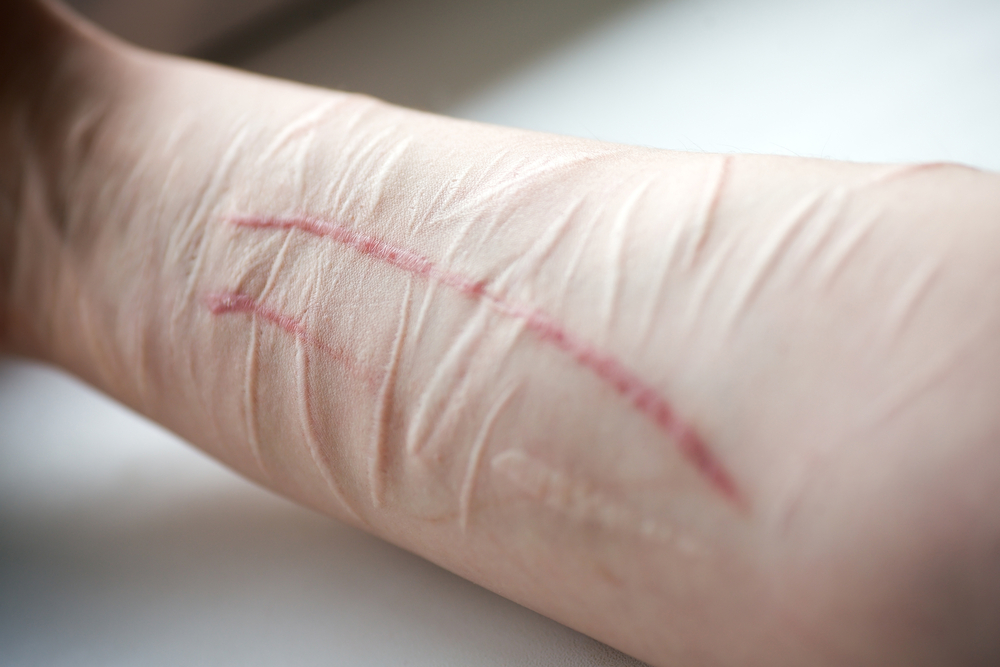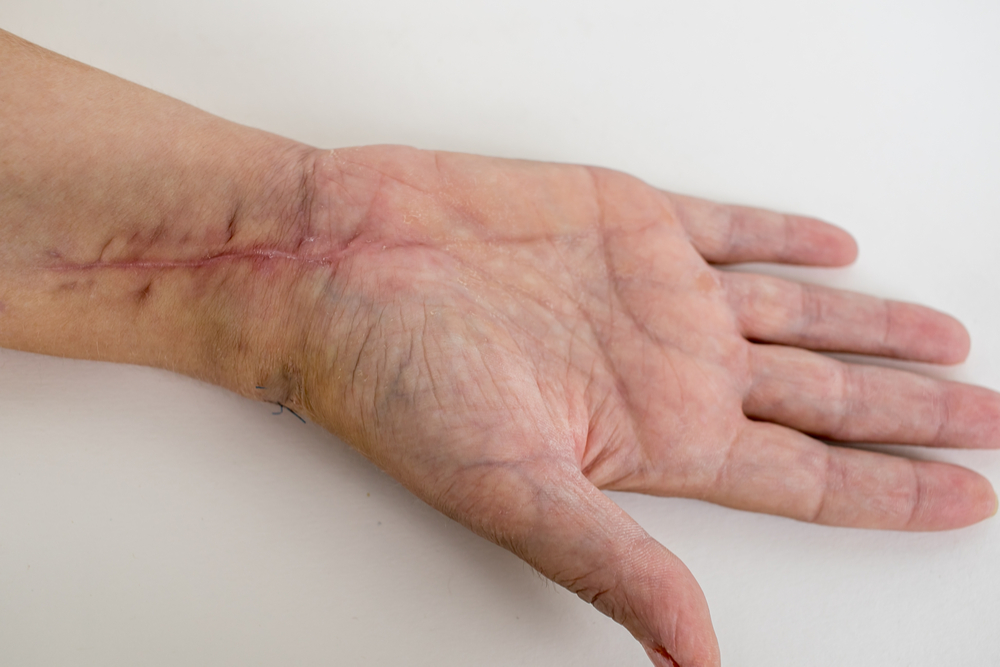There was once a time, not so long ago, when being blessed with a cleft chin was considered a highly desirable facial feature.
Back in the mid-20th century, Hollywood icons like Kirk Douglas, Ava Gardner, and Clark Gable were among the top sex symbols of their day, and what did they all share in common? You guessed it; they all had a cleft chin or it’s almost identical cousin, a chin dimple.
For men, these vertical gaps in the middle of their chins were equated with hyper-masculinity. For a female star like Gardner, many considered her cleft chin to be yet one more distinctive, natural feature on an already beautiful woman.
These days, however, cleft chins aren’t quite as envied as they were 70 years ago. Instead, they’re often referred to as “butt chins”, which is far from the most flattering of labels.
Every year, an increasing number of men and women are undergoing cosmetic procedures to minimize the appearance of deep chin clefts and dimples. Here we discuss the various surgical and non-surgical approaches to cleft chin removal.

What is a cleft chin?
A cleft chin is specifically a chin with a Y-shaped dimple down the middle.
The technical difference between a cleft chin and a chin dimple is that there is no associated underlying bone deformity to the latter, but in most instances, the treatments to correct both chin types are similar, if not the same.
It’s usually a genetic trait, so if you’re mother, father, or someone else in your family has one, there’s a pretty good chance you could have one as well.
Cleft chins form while inside the womb and are caused by one of two issues; either the bone in the lower jaw didn’t fuse properly during fetal development which created an indentation, or the chin muscles (mentalis muscles) on both sides of the dimple are further apart than normal, effectively pulling in the skin around the chin area.
In the vast majority of instances, chin clefting is caused by how the mentalis muscles are situated: there’s either a wide space between the two mentalis muscles or they are particularly large, creating a valley of sorts between them.
How to correct a cleft chin
There are a few different approaches to smoothing out a cleft chin, largely depending on whether you want to try removing it temporarily through various fillers and injectables, or are prepared to undergo a surgical option to remove it permanently.
Chin fillers
The most straightforward method to remove a chin dimple is by injecting a soft tissue hyaluronic acid (HA) filler like Restylane or Juvederm into the chin area.
When injected directly into the dimple, the HA filler will effectively raise the skin in the dimple area to bring it in to proportion with the rest of the chin, creating a smooth surface where there had previously been a gap. Since these fillers are primarily comprised of a substance that is naturally produced by the body, they typically represent very little risk.
As Colorado-based certified aesthetic nurse injector Ali McCoy Stengel notes, “depending on the depth of the dimpled chin, fillers are usually a great alternative to surgery to instantly lift the dimpled area and create a smoother appearance in the chin. When using fillers such as Juvederm, the risks are very low, if any, and we typically only see swelling or bruising at the injection site.”
The downside to soft tissue fillers like Juvederm is that they aren’t permanent, with the effects typically lasting no longer than a year, so the procedure needs to be repeated on a regular basis. Over time, repeat injections eventually proves fillers to be a rather expensive option.
Also, as Stengel points out, “recovery time can take up to two weeks for the HA filler to fully integrate into the surrounding tissue and feel less noticeable to the touch.”
Botox injections
Botox is primarily used to relax certain facial muscles, keeping them from contracting and pulling on the skin that in turn causes wrinkles to form. Botox injections typically involve little to no swelling, bruising, or recovery time.
Given that a cleft chin is actually a depression between the two mentalis muscles, Botox can paralyze these muscles, thus minimizing the appearance of the cleft.
As HA fillers actually plump up the area being injected rather than simply relax the mentalis muscles, they’re generally considered better suited for the purposes of cosmetically altering a cleft chin.
Further, the effects of Botox only last a few months, so even this partial treatment needs to be repeated several times a year, making fillers a far preferable option.
Fat grafting
Another injectable treatment option is fat grafting, a minimally invasive technique said to enjoy a high rate of success.
Liposuction must first be performed to harvest fat from the patient’s thighs, abdomen or buttocks. The fat is then purified and reinjected into the chin.
As with HA fillers, fat injections add volume and smoothen the chin’s dimple or indentation. The downside is that they do so at the risk of increasing the chin’s size, which could be undesirable for many people.
Cleft chin surgery
The primary surgical options to correct a cleft chin involve either modifying the chin bone itself, addressing the placement of the mentalis muscles, or a combination of the two.
One clear advantage of choosing a surgical option is that once your cleft chin has been smoothed out, in most cases you’ll never need to do anything to it again. The results of the surgery are permanent.
One popular surgical option to correct a cleft chin are chin implants. In this procedure the implant can be a piece of bone, either real or artificial. The implant is placed against the underside of the lower jawbone and underneath the mentalis muscles to give the chin a rounder shape.
When a cleft chin is the result of an indentation to the underlying bone, a surgery can be performed to shave the bone until it is even and blends in with the rest of the chin.
Much depends on how prominent a cleft chin you have. One important thing to keep in mind is that it’s occasionally impossible to manage a particularly prominent cleft chin through surgery alone. This is because the mentalis muscles can only be modified to a certain degree before the chin starts to look unnatural. In some instances, surgery can be combined with filler injections to meet the patient’s cosmetic objectives.
Surgery vs fillers: the pros and cons
While various providers might prefer different fillers, the approach to correcting a cleft chin through injectables largely remains the same.
“When it comes to more superficial or subdermal injections, most fillers work well,” says Dr. Taylor R. Pollei, a Los Angeles-based facial plastic surgeon. “If the cleft is very superficial, I’ll use a thinner, more pliable filler like Belotero, which works well to soften the cleft or dimple with an anticipated shorter duration of effect. But there’s also a place for deeper fillers like Lift made by Galderma or Voluma by Allergan, such as when the filler is being placed down on the bone.”
Ali McCoy Stengal prefers to use “Juvederm Ultra Plus in the chin area as it’s high cohesivity allows the hyaluronic acid to fill the area and remain plump for a duration of up to year.”
When choosing between injections and surgery, which approach will be best for you personally is largely your decision to make.
“Since there is no option that is way superior, it all depends on the patient’s situation,” remarks Pollei. “In cases where the dimpling or cleft is less prominent, fillers are more likely to soften the indentation, and I will typically use a low dose neurotoxin — Botox — injection at the same time to decrease muscle activity.”
Pollei says the pros of filler injections include them being “safe, reversible, with no anesthesia needed, and they can be modified or touched up to get the desired effect. The cons, however, are that they’re only temporary and limited in their ability to lift a specific area of depression effectively.”
As for surgery, Pollei says the advantages are that “it’s permanent, able to correct a greater defect, actually repositions the muscle responsible for the defect, can also address underlying bone excess that leads to a larger cleft, and be performed without a visible incision.” The primary negatives of a surgical approach being that “anesthesia is necessary, and there’s a longer recovery time compared to injection.”
Again, the choice is yours to make. That said, there is one more crucially important factor to consider — the cost.
The cost to correct a cleft chin
As with all cosmetic treatments, the cost to correct a cleft chin varies significantly according to a wide range of factors, among them being where you live, the skill level of your provider, and the complexity of the procedure itself, which will likely depend on the extent of your chin cleft or dimple.
Pollie says that at his clinic, “treatment with fillers range from $500 to $1,000, depending on whether just a small amount of filler is used, or a combination of filler with neurotoxin is needed. Surgery for a chin cleft can cost between $4,000-$6,000, depending on the amount of correction and duration of the procedure. But this figure typically includes the surgery center and anesthesia costs, as well as the underlying chin implant should one be necessary.”
Stengal says she charges $500 per syringe of filler, and that “typically only one syringe is needed to treat the area.”
Your plastic surgeon will be able to make the appropriate recommendations for treatment based on your specific facial characteristics, chin anatomy, and budget.









